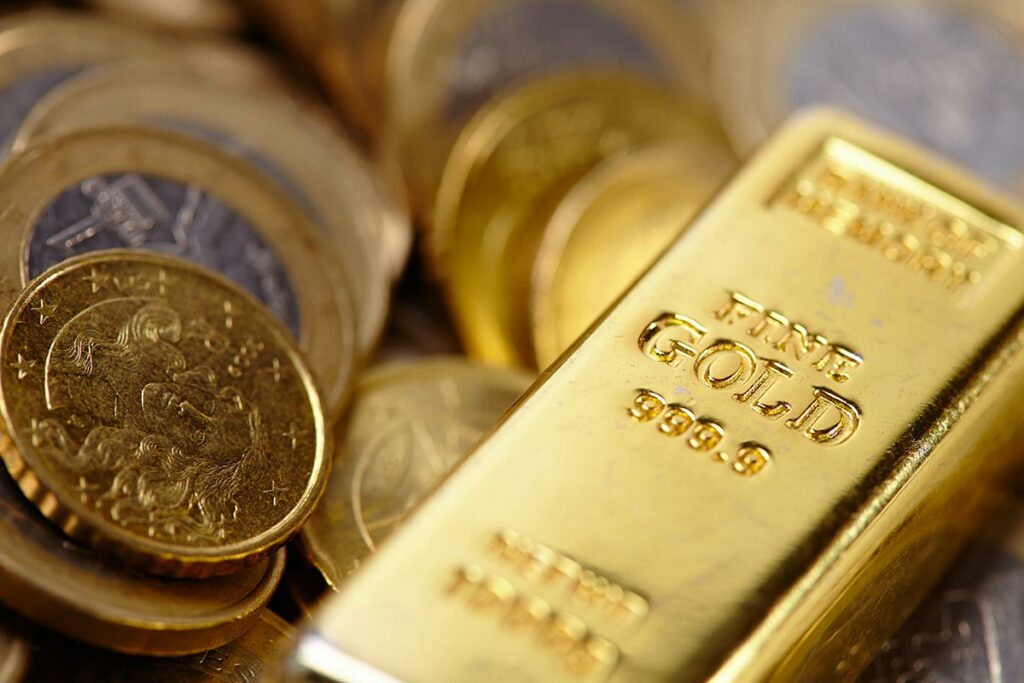Every day, more and more investors are coming to the realization that buying precious metals like gold and silver in bullion form is a wise way to diversify their financial position. With the increased risk of the stock and bond market declining due to higher interest rates and tightening monetary policies, investing in precious metals have appeared as a reasonably stable way to hedge against unanticipated developments.
Precious metal bullion comes in two major forms accessible to the buying public: bars and coins. The pressing issue for investors then becomes which is the smarter choice? Do bars or coins provide more financial security and a return on investment? Are bars and coins taxed differently? And are there other factors which the average investor might not even know about relating to the acquisition of bullion? By means of answering these important questions, the following is an informative, head-to-head comparison of precious metal bullion bars vs. coins.

Face Value vs. Actual Value of Coins
One of the major factors to contemplate when deciding what form of precious metal bullion to buy is the face value versus the actual value of coins. Essentially, this is the difference between the unit of value literally stamped on the coin and its actual worth.
While a precious metal coin’s face value is easy to determine simply by looking at its face, calculating its actual worth is more difficult. Several key factors must be considered, including melt value (the base worth of the metal contained in the coin), historic value, aesthetic features, mint year, condition of the coin, scarcity, and collectability. Therefore, due to any number of these factors, a coin made from precious metals may achieve a value far greater than not only its face value, but even beyond that of the base worth of the gold or silver it contains. This is why a coin composed of metals which, when melted down, might only be worth $100 by weight, but might be bought at an auction for $1000.
The same cannot be said of bullion bars, as their value is exclusively tied to the worth of the commodity itself, be it gold, silver, platinum, or palladium, and outside factors such as rarity, historic value, and aesthetic features simply do not enter into the equation.
The Divisibility Aspect of Bars
Bullion bars, though they may not appreciate in value due to such outside factors as listed above, have merits all their own that coins do not possess. Chief among these is divisibility. Primarily a form of saving or investment, precious metal bullion bars can be purchased in varying units of weight, such as 1 kilogram and 100 grams. This gives the buyer much greater flexibility should they wish to sell off part of their bar collection while still retaining some. As their value is tied to commodity market prices, one 100 gram bar is worth exactly the same amount as another 100 gram bar.
In this case, the same cannot be said of precious metal bullion coins, as one coin can differ wildly in value from another, depending on how it is appraised using non-intrinsic factors. Besides generally having lower premiums than coins, it is because of their predictability and flexibility that dealing in bullion bars is the preference of large, institutional buyers such as governments and private firms.
Taxation Issues
Tax issues are also a factor to consider. To begin with, in the United States, bullion, regardless of whether it takes the form of bars or coins, is subject to the capital gains tax. However, this tax only applies after the sale of precious metal bullion, and only if the bullion is held for more than one year. Physical holdings in gold or silver are subject to a capital gains tax at an individual’s marginal tax rate, although this maxes out at 28%. So, even individuals who fall into higher tax brackets only have to pay 28% on their precious metals sales. Short-term gains on precious metals are taxed at ordinary income rates.
Additionally, sales of gold or silver bullion must be reported on an individual’s annual tax return. Depending on the classification of the metal in question, Form 1099-B has to be submitted to the Internal Revenue Service at the time of sale because such sales are considered taxable income. Some precious metal products requiring such a filing include $1,000 face value of U.S. 90% silver dimes, quarter or half dollars, and 25 or more 1-ounce Gold Maple Leaf, Gold Krugerrand, or Gold Mexican Onza coins. Gold and silver bars that are 1 kilogram necessitate this filling, as well. However, American Gold, Silver, Platinum, and Palladium Eagle coin sales do not require a Form 1099-B filing.
Conclusion
In conclusion, for individual investors, purchasing precious metal coins tends to be the best option. Outside of their potential for appreciation due to numerous factors beyond their face value and the metal they contain, this is also because coins are highly liquid, easy to trade, incur lower costs during transactions, and usually sell at higher premiums than bars. Also, purchasing United States bullion coins carry fewer tax reporting responsibilities.
On the other hand, for institutional buyers looking to buy large quantities of precious metal bullion, bars make the most sense due to their predictability, their innate divisibility, their linkage to commodity market prices, as well as the fact that they have lower premiums.




